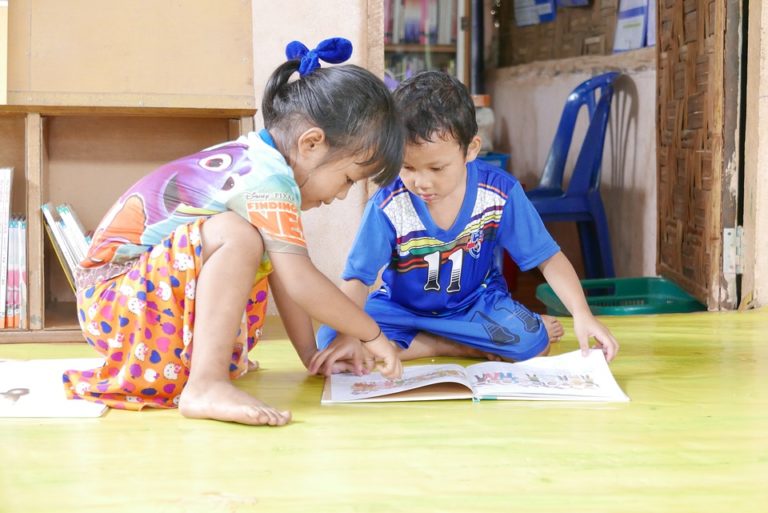Ready to start teaching English online?
Teach with VIPKidTeachers often feel frustrated or can feel afraid they aren’t teaching properly when young students won’t speak during class. Understanding the natural development of the language-learning process can help calm those fears and frustrations when an English-language learner (ELL) is going through the “Silent Period.”
By MarJanita B
He sat in a chair at the table, stoically facing the camera. I started class and desperately tried to elicit a name from him. No response. I TPR-ed, danced and sang through that lesson, and the next, and the ones after that. I jumped, hopped, and pulled out dozens of props. I used my students’ favorite rewards. Dino and I held great conversations, but could I get 4-year-old Mark to utter even one word? Nope!
One day at dinner, I was discussing how my classes had gone for the day. Once I got to the description of Mark’s class, I heard comments such as, “Well, he probably just doesn’t want to participate,” and “Maybe he has learning difficulties.”
Although those may be a person’s first thoughts, Mark’s lack of response is completely typical for the young student. Actually, there is even a term for it known as the “Silent Period.”
Imagine yourself as a baby or picture your own infant. We know that newborns aren’t exactly reciting The Pledge of Allegiance as soon as they enter this world. They go through a stage of listening, watching, and processing. The amount of time needed for this can vary per child, but eventually, they begin to combine everything they collected and produce their own words. This process also often occurs among second-language learners.
1) What does the “Silent Period” look like?
- It is a process that all ESL students go through but is more evident in younger students because it occurs for a longer period of time.
- The length of time can vary, but is usually longer the younger the student is.
- The student is learning, even if they are not producing the language yet.
- During this time, students are working full-time and at top speed with listening, watching, processing, and comprehending.
2) How to handle the “Silent Period?”
- Be patient.
- Understand that it’s a natural part of learning.
- Use lots of TPR, props, and visuals to aid them in their reception of language and keep them engaged.
- Give extensive praise for participation, even if it’s just participation through movement, expression, or accomplishing a task on the screen.
- Keep affective filters low, so the student feels comfortable. If they are scared of the teacher or very timid, the “Silent Period” can last even longer.
- Explain in feedback to parents that the “Silent Period” is a natural part of language learning.
- Use a puppet to demonstrate conversation, the repeating of words, and the answering of questions.
- Remember that a student in the “Silent Period” is still learning, even if they are not speaking; it just means they need a little extra patience and understanding on the teacher’s part.
Whatever happened to Mark? Well, I’m happy to report that eventually, Mark started repeating an occasional word throughout the lesson. When this happened, I threw pom-poms, blew bubbles, shook hand clappers, and basically acted like a crazy teacher because I was so proud of him. Before long, he was even able to use sentences, including his favorite one, “Teacher, I want the fish reward.”
The Moral of the Story?
Whenever you come across a student going through the “Silent Period,” remember Mark and be reminded that your patience and understanding will bring great results!
Earn $14-22 an hour Teaching English from Home
If you enjoyed this article, check out our blogs on Top Comprehensible Input and ESL Topics & Questions for Students.
This Teaching Essentials Blog Series looks at some tools-of-the-trade for online ESL instruction. In it, we explore a few key concepts and dive into what makes them indispensable to our teachers.
MarJanita B. lives in Lancaster, PA., where she keeps her classroom stocked with lots of fun props and rewards for those young students whom she absolutely adores teaching. When she’s not in her happy place teaching her VIPKid students, she’s in her other happy place working as a VIPKid Workshop Mentor and VIPKid TMC.



